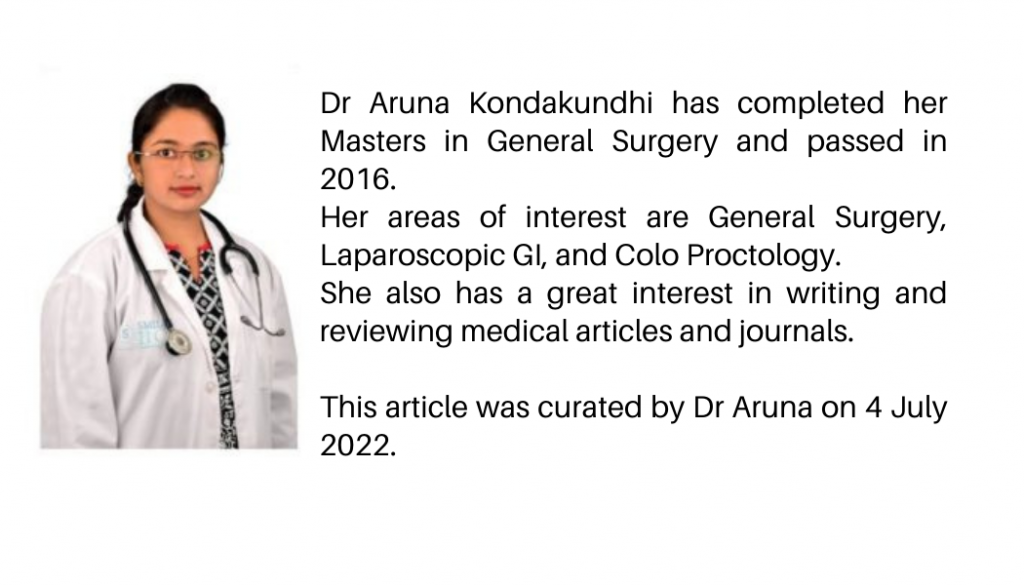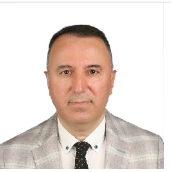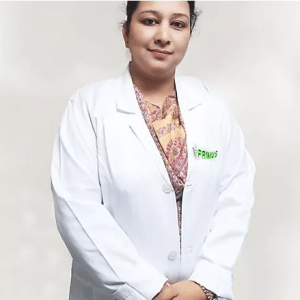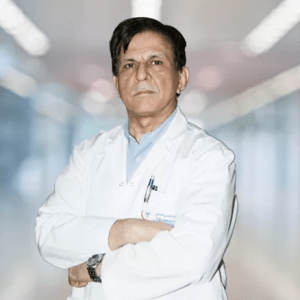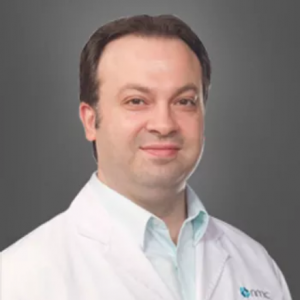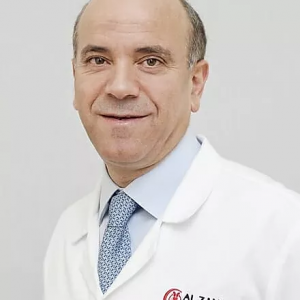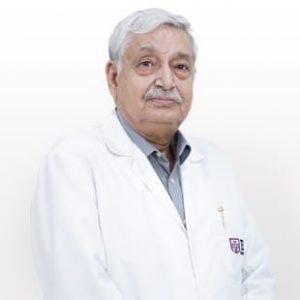Lung Cancer
On noticing the title, one would automatically associate lung cancer with smoking. Your intuition, thanks to the strict regulation and successful public awareness campaigns, does hold true. What was once considered the apex of manliness and a tool to boost morality is being frowned upon in most developed nations. Although death rates due to […] Read More
Top Doctors For Lung Cancer Treatments
Top Hospitals For Lung Cancer Treatments
Lung Cancer
Table of contents
What is lung cancer?
Lung cancer is considered the most common cancer and the leading cause of cancer death worldwide. Lung cancer develops due to the abnormal growth of the cells. These cells grow into a mass called tumors. These tumors can be benign or malignant.

What are the types of lung cancer?
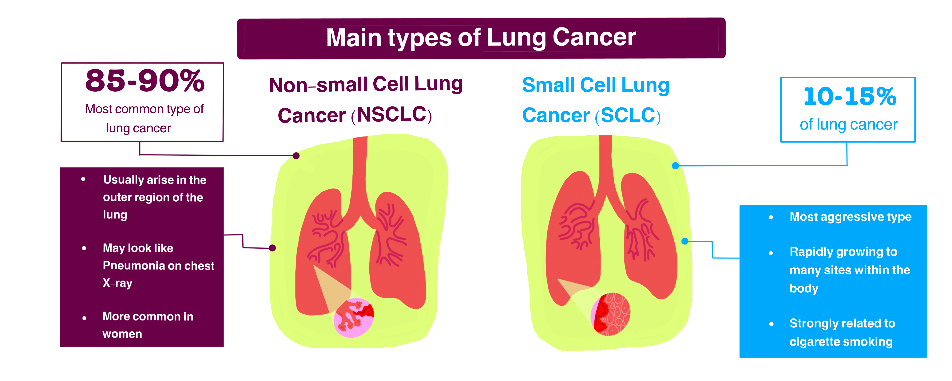

Bronchogenic carcinoma are divided into two categories based on the tumor size. It represents small cell lung cancer (SCLC) and non-small cell lung cancer (NSCLC). SCLC is seen in about 20 percent of the total patients diagnosed with lung cancer. However, it is the most aggressive type of lung cancer. It is most commonly seen in smokers and only 1 percent of non-smokers. In most cases of SCLC, the cancer is only discovered after it has spread to other organs and tissues. NSCLC, on the other hand, is relatively more prevalent, with about 80 percent of the total cases being cases of NSCLC. Based on the type of cells found in the tumor, it can be divided into the following subcategories:
Adenocarcinomas: These are usually common in smokers. However, they are also seen in non-smokers and generally develop in the outer areas of the lung.
Bronchioloalveolar carcinoma: a subtype of adenocarcinoma; this usually develops at multiple lung sites and spreads via the alveolar walls.
Squamous cell carcinoma: Although it is a more common type of cancer than adenocarcinomas, they still comprise 30 percent of the total NSCLC cases and mostly occur in the central chest area in the bronchi.
Large cell /undifferentiated carcinomas: Least common NSCLC.
Mixture: different types of NSCLC in one.
Besides SCLC and NSCLC, other cancers are not as common as both. However, they comprise 5 percent-10 percent of the total cases:
Bronchial carcinoids: Seen mostly in individuals of forty years and younger, these tumors are small, about three to four cm, and can metastasize with a few of them secreting hormone-like substances, which may show specific symptoms common to that hormone. If detected early enough, it can be cured via surgery.
Cancers originating from supporting lung tissue.

How is lung cancer diagnosed?
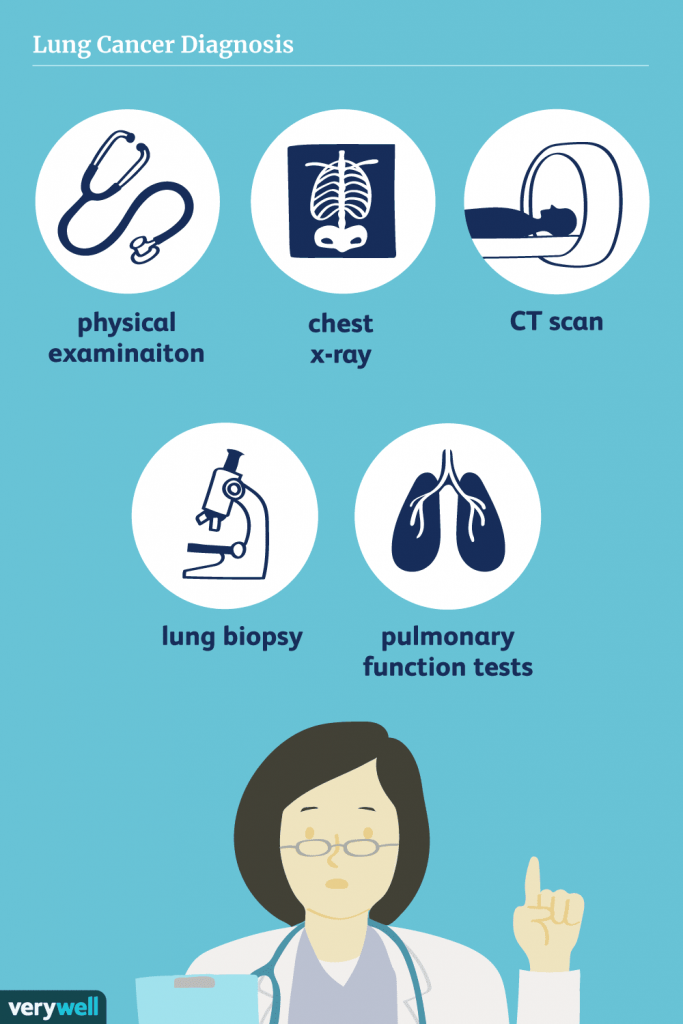
The patient should consult the doctor immediately whenever the patient finds any abnormalities in the respiratory system, like coughing, blood along with sputum, weight loss, breathing difficulties, etc. The doctor will examine the patient thoroughly. The doctor will do a physical examination of the patient and completely records the patient’s medical history and family history. To confirm the diagnosis, the doctor will ask the patient to undergo a couple of laboratory tests and scans. They are listed below:
- Physical examination
- Records medical and family history of the patient
- Investigational scans: They include x-ray scans, CT scans, MRI scans, PET scans, etc. These scans help in finding the location of the tumor, the size of the tumor, and the spread of the tumor to other parts of the body.
- Sputum Cytology: This test is done whenever a patient coughs along with sputum. During this test, a microscopic examination determines if cancer cells are present or not.
- Bronchoscopy: During this test, a lighted tube, along with a camera, is passed down the throat and lungs, allowing the examiner to examine the lungs closely.
- Tissue Biopsy: A small abnormal tissue sample is taken and sent for pathological study during this procedure. The biopsy can be done using the following methods.
- Mediastinoscopy- During this procedure, the doctor makes an incision at the base of the neck, a lighted tube, and a camera are inserted, and a small tissue sample is taken from the lymph node. This procedure is usually performed under sedation.
- Lung needle biopsy- During this procedure, the doctor inserts a needle through the chest wall and into the suspicious lung tissue, and a small tissue sample is taken.
Stages of lung cancer
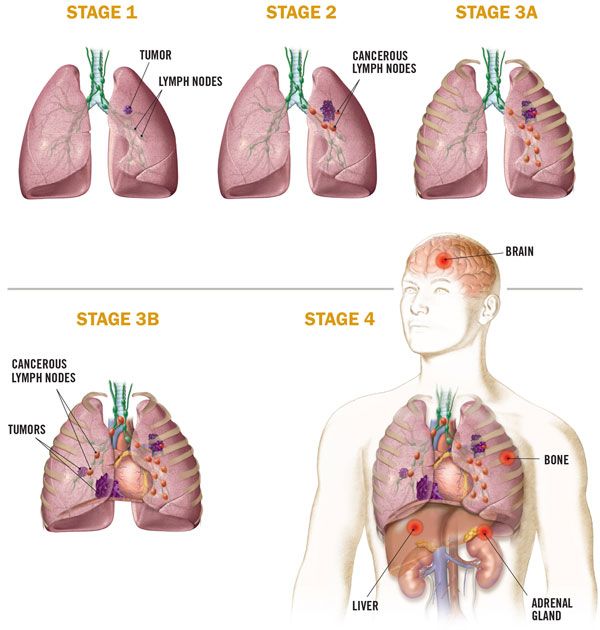
Once diagnosed, the next step is to stage the cancer. This gives the doctor a brief idea of what kind of medication or treatment is right for the patient. Lung cancer may fall under the following stages:
Stage I: The tumor is less than two inches in size, and the cancer is limited to the lungs without spreading to the neighboring lymph nodes.
Stage II: Two conditions may qualify cancer to be stage II, namely if the tumor is larger than two inches or has a smaller tumor that has involved nearby structures like the chest wall, the lining around the lungs, or the diaphragm. It may or may not have spread into the lymph nodes.
Stage III: The cancer has grown large and has affected neighboring regions, or smaller tumors have developed in lymph nodes further from the lungs.
Stage IV: Cancer has spread beyond the lungs to either the unaffected lung or any other distant tissue or organ.
How is lung cancer treated?
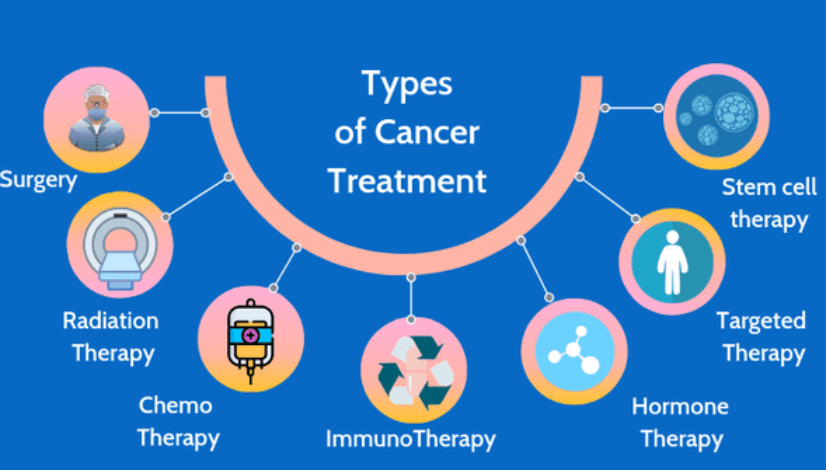
a) Surgery:
In surgery, the surgeon may remove the cancerous lung region and a margin of healthy tissue. A surgical procedure is usually apt for early-stage NSCLC, given its relatively non-aggressive nature and its likelihood of effectively removing most cancer from the lungs. The kind of surgery performed is based on which part of the lung is affected by cancer:
Lobectomy: The lungs are divided into lobes: regions divided by fissures. There are a total of five lobes: three in the right lung and two in the left lung, meaning each lung differs from the other. If the cancer is limited to just one lobe of one lung, then a lobectomy is performed, which involves the removal of the affected lobe. Similarly, Bilobectomy: Involves the removal of two lobes.
Pneumonectomy involves removing the entire lung in cases where the cancer is located in the center of the lung or has affected two lobes of the left lung or three lobes of the right lung. A common misunderstanding about this procedure is that the patient will have breathing issues, thanks to the smaller lung area. However, no such instance has been proven, and breathing is shown to be unaffected. Also, doctors would evaluate the patient’s breathing patterns before recommending this procedure.
Wedge Resection: If the doctor feels that the patient may have compromised breathing after a lobectomy and the cancer is also limited to a small part of the lung, then a wedge resection is performed where only the affected part of the lung is removed (generally much smaller than a lobe) along with the surrounding tissue. The wedge resection surgery is performed only when the patient has a breathing issue, as there’s a high risk of cancer recurrence after the procedure.
Segmentectomy: Another alternative to a lobectomy is in cases where it cannot be performed due to a patient’s specific case, then a segmentectomy is performed. Segments are created by dividing the lobes into smaller pieces. These segments are those that are removed during a segmentectomy.
b) Chemotherapy:
The main purpose of this therapy is to kill cancer cells. This therapy is generally used after surgery to kill remaining cancer cells. It involves the use of chemotherapy drugs injected into the bloodstream via a vein or orally. Treatment lasts for weeks or months, with gaps in between to allow the patient to recover. Chemotherapy is usually not region-specific and tends to be able to cover the entire body and combat cancer cells that may arise anywhere. This feature is especially effective regarding SCLC, which is known to metastasize faster and to different body parts.
c) Targeted drug therapy:
Makes use of drugs designed to combat certain complications of cancer. Though it may seem that it overlaps with chemotherapy, that isn’t the case, unlike chemotherapy. These drugs are designed to affect certain features of a cancer cell. The drugs thus used are differentiated based on which function or part of the cancer cell it affects:
Angiogenesis– drugs that affect the blood supply of the tumor.
Drugs that affect the epidermal growth factor receptor, a protein found on the tumor that is in charge of signaling the cells to divide and multiply. These drugs inhibit it from receiving the signals, thereby limiting the tumor.
Drugs aimed at cases with ALK gene rearrangement are most commonly seen in smokers.
These drugs come with their specific side effects. Though they may not be as intense as those seen in chemotherapy or radiation therapy, they may still be present and may include: nausea, vomiting, fatigue, skin sores, diarrhea, etc.
d) Radiation therapy
During this therapy, a high-energy x-ray beam is used to kill cancer cells. It can be used as a primary treatment where surgery cannot be performed or where surgery is contraindicated. Combining radiation therapy with chemotherapy is possible.
e) Immunotherapy
Symptoms

Lung cancer has no specific symptoms. It depends on the extent of cancer and where it is located. In some cases, it might exhibit pain in the patient, while in other cases, the patient won’t even realize the presence of lung cancer until they are diagnosed with it during a routine check-up. However, the possible symptoms can be narrowed down, along with their respective reasons, as follows:
- Shortness of breath
- Hoarse voice
- Shoulder, Chest, and back pain
- Nausea, vomiting
- Finger clubbing
- Hypercalcemia
- General fatigue
- Weight loss
- Wheezing
- Recurrent respiratory tract infections
- Blood in sputum
Causes

Though no formal cause has been found to cause cancer, it can be instigated by the following two reasons:
Carcinogens: These are substances directly attributed to contributing to cancer by damaging the cells. An ideal example of carcinogens with respect to the lungs is those suspended in tobacco smoke: 87 percent of the total cases of lung cancer have been attributed to smoking and exposure to secondhand smoke.
Genes: An individual’s genetic makeup might be such that they are more likely to develop lung cancer later in the future, either directly or by being instigated by external environmental factors like pollution.
FAQ
The risk factors for lung cancer are listed below: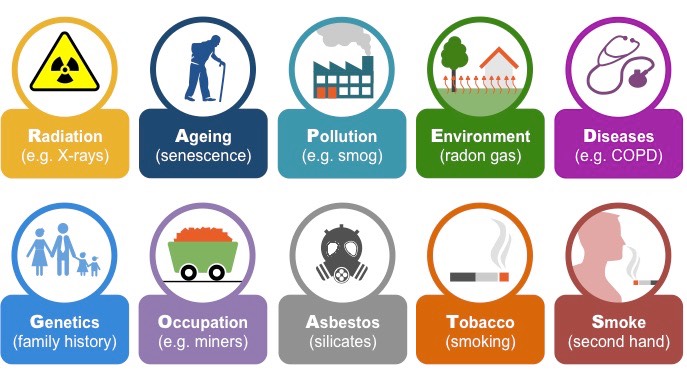
Picture courtesy: Allina Health
The most common complications of lung cancer are listed below:
a) Recurrence of the cancer
b) Metastasis (spread of cancer) of cancer to other parts of the body
c) Lung infections
d) Heart blockage
e) Blood clots
f) Hypercalcemia (increased levels of calcium in the body)
g) Spinal cord compression
h) Superior vena cava syndrome.
i) Pleural effusion (fluid in the chest)
j) Shortness of breath
Lung cancer cannot be prevented completely. But there are ways by which the risk of cancer can be reduced. They are:
a) Quit smoking
b) Avoid secondhand smoke
c) Avoid carcinogens at work
d) Maintain a healthy lifestyle
e) Exercise regularly
f) Eat more fruits and vegetables
g) Avoid too much exposure to radiation and hazardous chemicals.
The prognosis of lung cancer depends upon the type and stage of cancer overall health of the patient. The estimated 5-year survival rate is:
Localized cancer- 60% survival rate
Regional cancer- 30% survival rate
Distant cancer- 6% survival rate.
